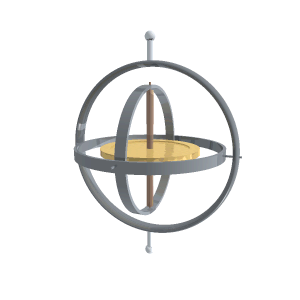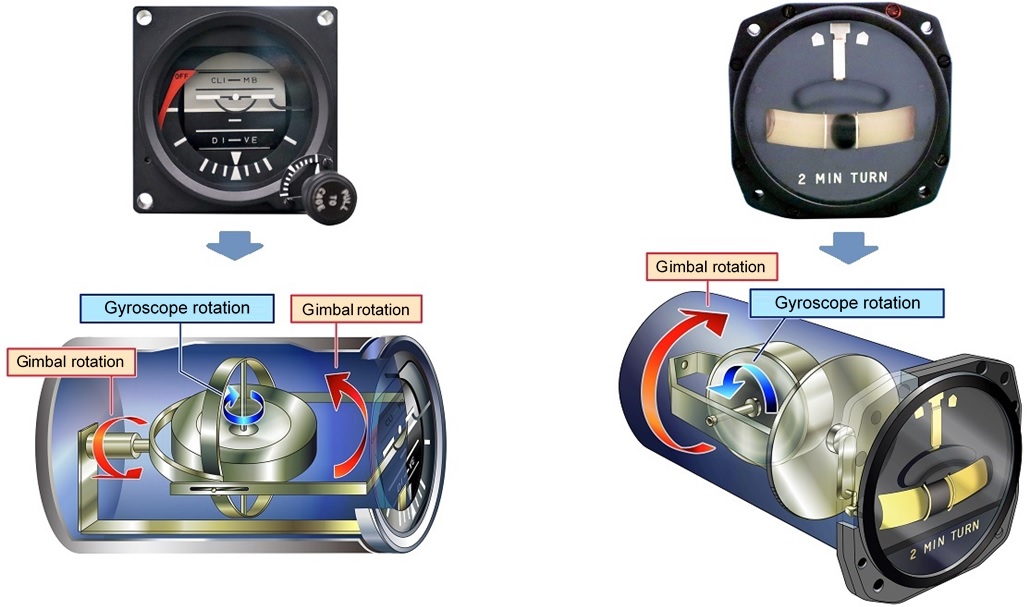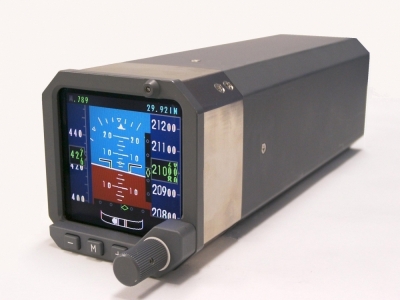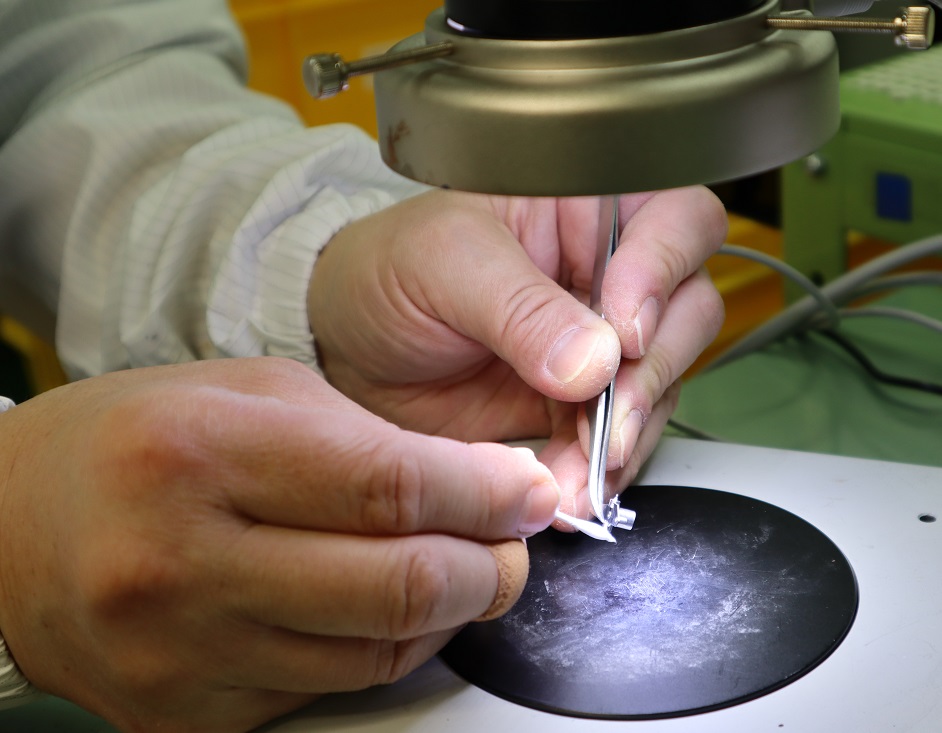Gyro Instruments
Shows an aircraft's tilt and direction
Unlike when you drive a car, in a vehicle like an aircraft -- that moves in three dimensions -- you need to know its attitude/tilt and orientation. Gyro instruments measure this information using gyroscopes, that are sensors of angles, angular rates (= rotation speed) and angular acceleration of objects.Since its establishment decades ago, TKK has manufactured "gyro horizons" indicating aircraft's tilt with respect to the horizon, "directional gyros" indicating aircraft heading, and "rate gyros" indicating turn direction and rate. These are mechanical instruments utilizing the gyroscope's nature: a rapidly spinning object, like a top, maintains the direction of its rotation axis.

A gyroscope in operation:
Composed of gimbals (in gray), one mounted on the other with orthogonal pivot axes, and a wheel mounted on the innermost gimbal.
The wheel and gimbals are connected to each other via a bearing.

Mechanisms of a gyro horizon (left) and a rate gyro:
Regardless of aircraft movement accompanied by the gimbals rotation,
the gyroscopes' axes maintain their directions and serve as references.


